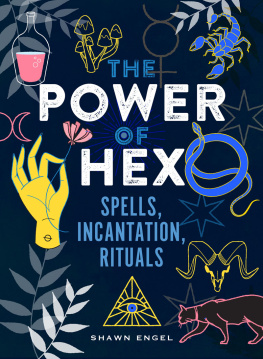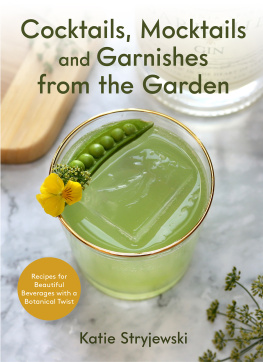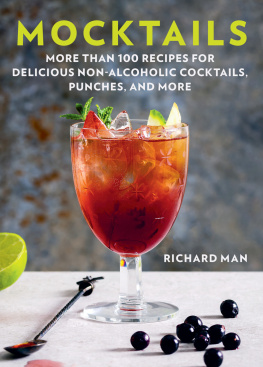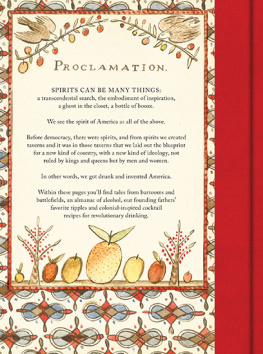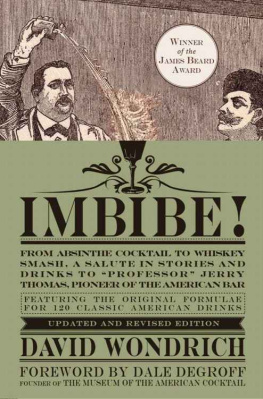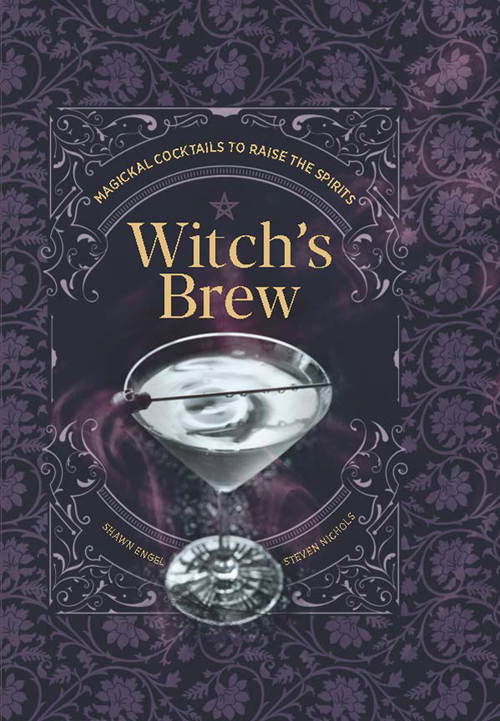STERLING EPICURE is a registered trademark and the distinctive Sterling Epicure logo is a trademark of Sterling Publishing Co, Inc.
Text and cover 2021 Sterling Publishing Co. Inc.
All rights reserved. No part of this publication may be reproduced, stored in a retrieval system, or transmitted in any form or by any means (including electronic, mechanical, photocopying, recording, or otherwise) without prior written permission from the publisher.
For information about custom editions, special sales, and premium and corporate purchases, please contact Sterling Special Sales at 800-805-5489 or .
All photographs by Rachel Johnson, except: Getty Images: DigitalVision Vectors: 4khz:
WITCHCRAFT
Ah, witchcraft. The term conjures images of green-faced, dowdy women with stringy hair and menacing cackles. Their presence makes pious mortals tremble with anxiety for fear of being hexed, cursed, and bound.
Witchcraft has had a glow up as of late, however. Our society has been changing rapidly, and its reliance on social media has ushered in a newfound transparency when it comes to lifestyle, along with the ability to connect folks all over the world. Because of the widespread ability to connect with people who feel the same way we do, witches are coming out of the broom closet left and right. Personally, I love witchcraft for many reasons, but the biggest reason is because it is an art form and a practice tailored to each practitioner.
So what exactly defines witchcraft as we understand it today?
In short, witchcraft is the immersion of energy and intention into a desire. Your desire can be as simple as pouring your morning coffee or as complex as bringing love into your life. You have the ability to decide when daily practice becomes witchcraft.
Anyone, anywhere, can be a witch. There is no bloodline that determines whether you are a witch. There are closed religions that are aligned with witchcraft in which there is a culture and ancestry. However, in the eclectic environment that has drawn the attention of many contemporary witches, the only requirement for entry is a desire to learn and read anything and everything you can.
Because all elements of life are made up of energy, there are also certain intentions that can be paired with each energetic vibration in our universe. So on every path a witch decides to walk, they can amplify their own daily intentions by creating a ripe energetic environment with a variety of ingredients. This can be created by using crystals, herbs, candles, colors, and more!
For example, if a witch has the intention to protect herself, she can use a crystal to do that. Obsidian can ward off negative energy, but the same effect can be produced by using an herb like basil, a black candle, or a mixture of the three. These physical ingredients can also be paired with a repetitive mantra, or incantation, and lo and behold, you have designed an entire spell.
I like to teach witches how to find magick in the mundane, because when you start living with magick in mind, you begin to live more intentionally, and then more abundantlywhich is where the art of cocktailing comes in. Creating a drink to enjoy by yourself or with others is already such an artistic and energetically joyous experience that, when combined with an intention and the knowledge of what youre actually creating, you can elevate the magick!
In using this book, you will see how crafting a cocktail can be a ritualistic experience and how imbibing can raise your energetic vibration. In no time, youll be firming up your relationship with cocktailing, moving from simply drinking what tastes good to crafting an intentional potion.
HERBOLOGY AND ELIXIRS
As stated in the previous section, there are certain intentions attributed to the energy of objects like plantsbasil protects, rosemary wards off sickness and nightmares, sage cleanses. Many witches, especially those deemed Kitchen Witches (those that are most comfortable creating their magick in the kitchen), practice herbology, the study of plants. By researching different types and strains of plants, you can determine which spells they can best support.
Herbs have tons of different correlations. Some are said to have masculine energy, which would be best for spells requiring action, aggression, or determination. Those that are said to be feminine would be best for creation, manifestation, fertility, or intuition. There are also planetary correspondences, alignments with certain deities, and medicinal properties that all make up the nature of a plant. You will see how this works, in depth, in the contents of this book.

If you think of many family remedies based off of old wives tales, you can break apart each ingredient to find its magickal correspondence. All of these recipes, passed down through generations, are based on folk magick, which is also called hearth magick. For example, one of the most common cold remedies, tea with honey and lemon, can be understood in a magickal sense by looking at all of the components individually. Black tea has caffeine, which is known to eliminate grogginess. Honey is known to soothe the throat. And lemon is said to break down mucus. But further? Black tea leaves are medicinally anti-inflammatory and highly oxidized, which makes them great for banishment. Honey boosts energy, aids in digestion, and prevents certain bacteria from growing, so its no wonder it is used in many healing spells. Lemon is very high in vitamin C and is known to prevent asthma, cancer, and strokes. Energetically, this fruit is used for cleansing spells (and even as a household cleaner in practical magick!).
So how does this work with cocktailing? Is it wise to work magick while under the influence? How do we heal while simultaneously indulging in a vice? The answers to these questions lie in the overall purpose of the act.
Sometimes the best self-care we can perform is tuning out. And for eons, humans have been using altered states to do this. As far as tuning in? You can also use an altered state to tap into the spirit realm, connecting with energies that may be otherwise inaccessible. Alcohol can be a very potent tool, and when using it with respect, you can unlock a new level of partaking. When we responsibly satisfy a desire that is backed by an intention, we make the act a truly magickal practice.
THE RITUAL OF IMBIBING: A HISTORY
One of the most recognizable manifestations of the act of tying one on is the Greek god Dionysus, who rules over wine, pleasure, festivity, and even madness. Dionysus, like many Greek deities, had an extremely traumatic childhood. This began with Hera, the wife of Zeus, causing the death of his mother by persuading her to ask Zeus to reveal himself to her while she was pregnant, in all of his godlike glory. The lightning bolts springing from Zeuss body killed her, and Dionysus was taken into Zeuss thigh to be born. Madness followed Dionysus pretty much everywhere he went, with the jealous Hera thrusting his caregivers and even Dionysus himself into madness at many points throughout his journey. But during his childhood, in order to keep him safe from Hera, Dionysus was brought up as a girl and taught the art of the vine, making him a creator. As an outcast, he was dubbed Eleutherios, or the liberator, by his followers because his use of wine, music, and frenzy freed them from social restraints and self-consciousness.


